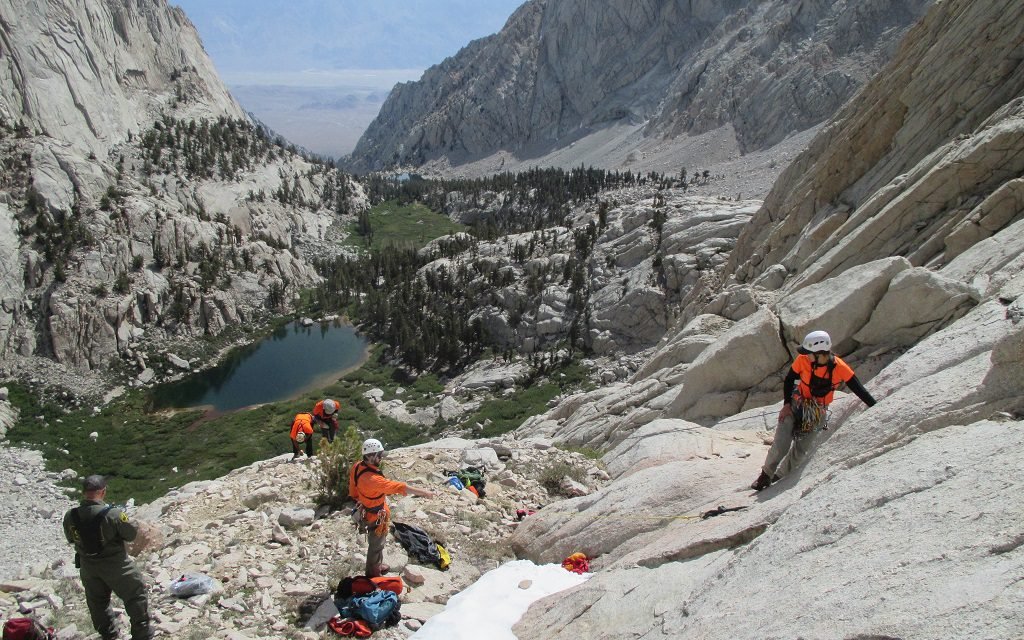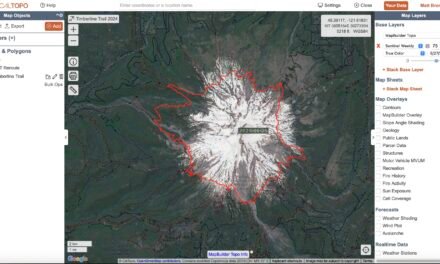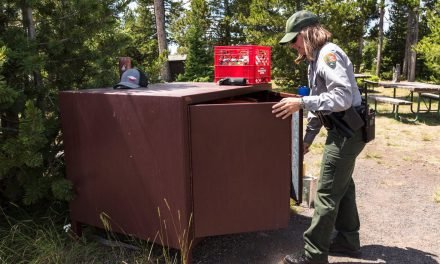As hiking season gets underway – it’s time to honor hour the real angels of the trail. Search and rescue (SAR) are the lifeblood of the backcountry and wilderness emergency response. Even so, there is a lot of misinformation about how SAR works and what they do. The information in this article is predominately collected from west coast SAR organizations and although much of this is common across the US – there are likely to be regional variations. Remember most SAR organizations are volunteers. If you hike in the backcountry consider making a donation to your local SAR organization – they may be the ones saving your life.
When to call SAR
Let’s start off with the basics. SAR is an emergency response. You should call them when your attempts at self-rescue have been unsuccessful and the situation is not going to get better. David Fox from the National Park Service provided these guidelines:
- Visitors to wilderness should be self-reliant and expect to work out solutions themselves. Self-rescue is preferred.
- Calls for SAR should be a last resort for minor incidents; we do not discourage calls for incidents with potential for death or serious injury.
- Calls for perceived minor incidents will likely be met with the closest employee being dispatched to walk to the incident to size up the situation and provide a government perspective on necessity of evacuation by an EMT.
- Calls will be responded to at the NPS’ discretion. There have been several calls in the last decade where rescue efforts were not initiated for 48-72 hours due to inclement weather. (Just because you press your beacon SOS does not mean rescue is coming.) We will do what we believe is reasonable keeping in mind that rescuer lives take precedent over the life of the individual who got themselves in trouble.
- Frivolous or fraudulent calls for air rescue can result in being charged with filing a false report. One such incident about 5 years ago resulted in the offender pleading guilty to a misdemeanor and paying court ordered restitution.
There have unfortunately been cases where SAR rescuers have died while trying to perform a rescue. SAR is not here to provide guiding services and doesn’t always expect a rapids response. It can take hours to gather a team together and sometimes days before a rescue can be attempted if weather conditions are not favorable.
How is SAR organized?
This is a little more complex but generally, at least on the west coast, falls into one of three categories:
- Federally funded – this is restricted to either the Coast Guard or the National Park Service. The resources for performing these resources come from the federal budget. In both cases funding and training for SAR is within the federal organization.
- County Volunteer – outside of the federal responsibility, most SAR teams are based on a per country basis. Many of these are volunteer organizations that are specially trained to federal standards in search and rescue operations. These volunteers can be as young as High School students right up to career outdoor professionals.
- County Staffed – there are some counties that retain a paid staff of SAR deputies.
There are also some affiliated groups that become involved in SAR activities. These are called upon by the Sheriff’s department to assist:
- Specialized assists for unusual conditions – this may include Alpine rescue which needs trained mountaineers
- Specialized communication teams to help co-ordinate communications between different agencies that may be involved in the search
- Commercial support. Commercial support is a difficult subject because it brings in the prospect of paying for a rescue. AMR has a couple of Reach and Treat (RAT) teams who will go out after a subject has been located to render immediate medical assistance. Until now treatment on trail has not been charged. There have also been very rare reports of commercial air service being used when a county had no access to any other air support.
Will being rescued by SAR cost me anything?
The basic answer to this is no. Calling SAR and being rescued to the trailhead will be free of charge, Indeed if you are rescued by a federal agency, such as the NPS, they are forbidden by law in charging;
Per Title 54 of the United States Code section 103101, the United States Congress has authorized funding for Search and Rescue activities through our base funding. Because they did not write in the law that we are entitled to seek restitution for the costs of rescue, we cannot bill for rescue regardless of the circumstance.
Dave Fox, SEKI NPS
I do not know of any instances of persons being rescued being charged financially for rescue operations. The only time I can think of this might happen would be if a rescued person was handed off to a Life Flight medical helicopter. Whether an air ambulance or ground ambulance I would expect health insurance would kick in at that point.
Nathan Currie, Fresno County SAR
Great Advice from SAR
The following is some great advice from Fresno SAR:
- Are cell phones reliable in the area? Spot and InReach satellite devices can summon emergency help. Satellite phones are an option.
- Make sure you know who is going to be responsible for search and rescue in the area you are heading to. It could be the county sheriff, National Park Service, or some other agency. It changes from state to state, from public to private lands etc.
- Leave an itinerary and map with someone and one in your car that spells out where you were planning on going, when you plan to be back and what equipment you have. Even detailing the color of your jacket, sleeping bag, tent and a picture of your boot sole can be very helpful in the event search and rescue needs to come look for you.
As you would expect, SAR operations pick up in the summer months. The following if from SEKI:

Outside of 2020, which was a very slow year because of COVID, there is a general increase in SAR rescues. This puts increased strain on both the NPS rescue services and also the County resources.
A final note on InReach type devices
As hiking becomes more popular, so does the prevalence of satellite devices. These are of course great safety devices. At least on the InReach, pressing the SOS button does not automatically connect you with SAR operations. It connects you to the GEOS communications center. This allows you to have a conversation with the GEOS operations center. before SAR is notified. This allows you to discuss the situation – this might include medical advice or other guidance. This is a great feature of two-way devices that are linked to GEOS (like the InReach) and may be able to save a situation before SAR needs to be called in.
Thanks to David Fox of the Sequoia District Ranger Office and Nathan Currie of Fresno County SAR. Please consider donating to your local SAR!
Summary
- If you are going into the backcountry – be prepared and assume you’ll have to self rescue
- Have the right equipment, satellite devices are very helpful
- If you do have a genuine emergency call SOS
- Calling GEOS allows you to have a conversation that might allow you to self rescue
- There is generally no cost for SAR operations (at least on the west coast) but if you need commercial services from the trail head or medical treatment expect to be billed as you would normally.






